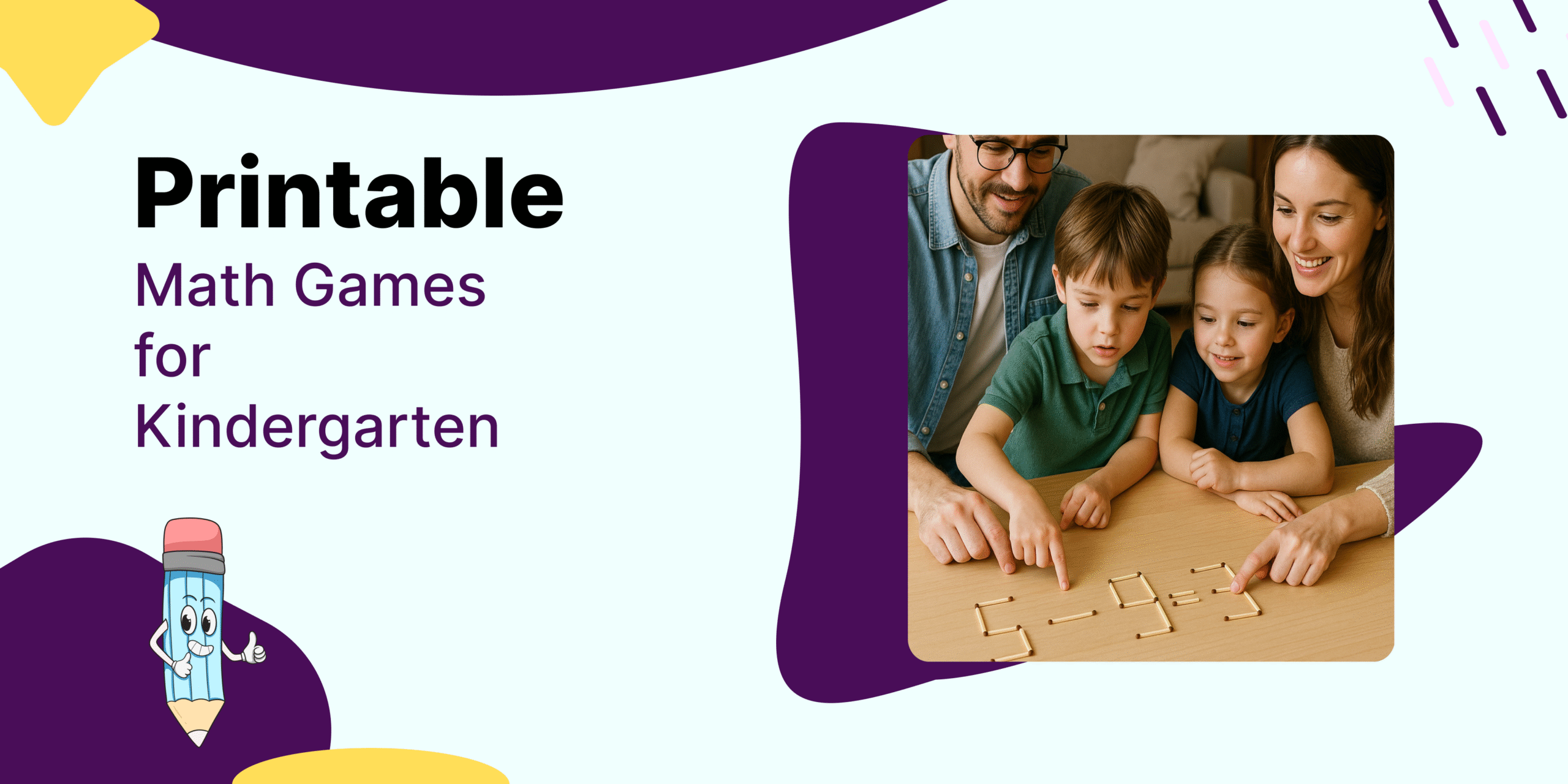Early Childhood is the best stage to build a strong foundation in mathematics. At this age, children learn best through play, exploration, and creativity. That’s why Printable Math Games for Kindergarten are such a powerful tool. They combine fun with learning, giving kids a chance to practice numbers, shapes, and patterns enjoyable.
In this blog, we’ll explore why printable math games are important for young learners, how they make math exciting, and the different ways parents and teachers can use them to support growth.
Why Printable Math Games Are Important for Kindergarten
Kindergarten is where Children begin their math journey. Concepts like counting, recognizing shapes, or learning simple addition and subtraction are introduced at this stage. But worksheets alone may not keep children engaged.
300 Matchstick Printable puzzle problem is solved by making practice interactive. Instead of simply writing answers, children play matching games, puzzles, or board-style activities that encourage them to think while having fun. This balance between play and learning ensures kids stay motivated and confident.
Benefits of Printable Math Games
- Encourage Active Learning
Games make children participate instead of just observing. They get to move pieces, match numbers, or color shapes, which makes learning more memorable. - Boost Confidence
When a child completes a game correctly, it creates a sense of achievement. This builds self-confidence and reduces math anxiety at an early stage. - Support Skill Development
Printable games not only improve math knowledge but also enhance fine motor skills, hand-eye coordination, and logical thinking. - Easy and Accessible
Parents and teachers can instantly download and print these games. They are affordable, reusable, and require very little preparation. - Fun for Everyone
Since the games are designed like playful activities, children don’t even realize they are practicing math. Learning becomes part of playtime.
How to Use Printable Math Games
Getting started with printable math games is simple. Here’s a step-by-step approach:
- Choose the Right Game – Pick activities that match your child’s current skill level, such as counting, addition, or shape recognition.
- Print and Prepare – Download the file and print on paper or cardstock. Some games can be laminated for reuse.
- Introduce the Rules – Explain the activity in simple words so your child understands the goal.
- Play Together – Guide your child through the first few rounds to build confidence.
- Practice Regularly – Use these games daily or weekly as part of learning time to build strong habits.
Types of Math Games for Kindergarten
- Counting Games: Activities that help kids count objects, match numbers, or connect dots.
- Shape Matching: Games where children identify, color, or sort different shapes.
- Addition and Subtraction: Simple puzzles or flashcards to practice early arithmetic.
- Pattern Recognition: Fun tasks that involve completing or predicting patterns.
- Number Bingo: A playful way to reinforce number recognition and sequencing.
These games are designed to be simple, colorful, and engaging—perfect for kindergarten learners.
Why Parents and Teachers Love Printable Math Games
Printable math puzzles are not just for students; parents and teachers equally appreciate them.
Parents see these games as a safe, screen-free way to engage their children. Instead of spending hours on gadgets, kids spend time solving puzzles, coloring, or counting objects on paper. This builds learning habits in a fun, hands-on way.
Teachers, on the other hand, find these resources extremely useful in the classroom. They can quickly set up group puzzle activities all ages, keep children engaged, and make lessons more interactive. Printable games also save preparation time since they are ready to use instantly.
Learning That Goes Beyond the Classroom
One of the best things about printable math games is their flexibility. Children can play them at home, in school, or even during travel. Since they are portable and easy to carry, parents can turn waiting times or weekends into playful learning opportunities.
Over time, these small activities help children develop problem-solving habits that extend beyond academics. They learn patience, decision-making, and logical thinking—skills that will help them throughout life.
Final Thoughts
Printable math games for kindergarten are more than just worksheets. They bring numbers, shapes, and patterns to life through interactive play. By turning learning into a game, children develop a positive attitude towards mathematics from the very beginning.
Whether you are a parent who wants your child to enjoy math at home or a teacher looking to make classroom sessions lively, printable math games are the perfect solution. Simple, affordable, and effective- they truly make math fun and meaningful for young learners.
So, print out a set today and watch your child discover the joy of learning through play.

